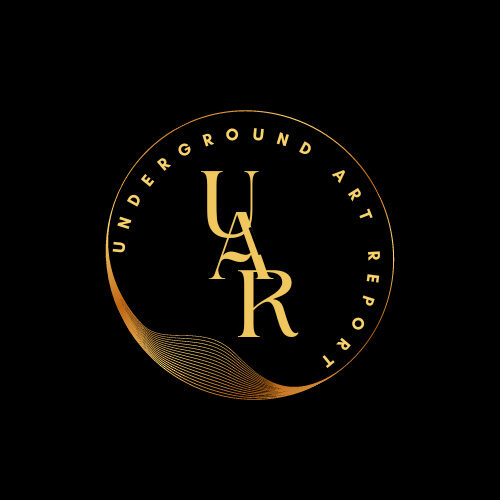Before the Crenshaw Wall became a canvas for artists to paint depictions of Black life in the mid-1970s, Mark Steven Greenfield remembers it as a place that gang members would tag regularly.
He recalls Alonzo Davis, the co-founder of the Brockman Gallery and a teacher at Crenshaw High School, getting a bunch of young artists together, including Greenfield, to start painting.
“Alonzo took a look at that and said, ‘Well, you know, let’s go see if we can spruce up that wall on Crenshaw because if we don’t do something, the graffiti is just going to get out of hand’.”
How it started
In the early days, Greenfield describes it as a guerrilla movement in the Crenshaw District: Several artists took turns painting images of Black culture on the wall, like The Brothers Johnson, lowriders and hip-hop. At first, the LAPD hit them with citations but, Greenfield says, L.A. City Councilmember Robert Farrell had the charges dropped and gave them stipends to work on the wall.
Then the community got involved.
“Sometimes people would bring us lunch,” Greenfield says. “We really felt that the community was validating what we had done.”
Greenfield, who says he was interested in Afro-futurism back then, decided his first painting would be of a Black man with big eyes full of knowledge and insight.
“I had this idealistic view of what black people in the future could and should be,” Greenfield says.
Over the next three decades, dozens of artists would paint images on the wall with a focus on Black history and culture. Over time, the roughly 780-foot-long structure became a symbol of pride and self-determination in the historically Black neighborhood of Crenshaw.
Now, years later, the Crenshaw Wall is getting a makeover. The L.A. Department of Cultural Affairs last week gave its approval for the plans to fix up the wall and create a new painting.
It’s all part of a long-discussed multimillion dollar redevelopment project led by the city of L.A. and the private nonprofit Destination Crenshaw to create what’s been described as an open-air museum that will include parklets and art installations throughout.
The organizers of Destination Crenshaw say that with this project they hope to revitalize a neighborhood that many argue has long lacked investment.
“The history of disinvestment and displacement is a source of trauma for our community in Crenshaw,” says Jason Foster, president and COO of Destination Crenshaw. “What we’re working to do is to cement the culture and the identity of our community.”
A call to restore the Crenshaw Wall
Eric “Cre8” Walker, an artist with the graffiti collective Rocking The Nation (RTN), grew up in South Central in the ‘80s and dreamed of painting on the Crenshaw Wall as a teenager. He recalls seeing all kinds of artwork — from intense murals that reflected the horrors of the crack epidemic to vibrant art that wished passersby happy holidays. Ice-T’s Rhyme Pays album was featured on the wall with dollar bills floating around and a character with a gold chain. Some artists paid tributes to friends who had died. For Walker, the wall was also a gathering place for the community to hang out.
In the early 2000s, Walker finally got his big chance to paint when he and other artists gathered funds for a mural project: One large Black history timeline called “Our Mighty Contribution.” It was a fresh attempt to spruce up the appearance of the wall that still exists today.
“We came at it in the sense of a cultural historical presentation,” Walker says. “We talked about the beginning of time and what we perceived to be the future of the end of time. We knew about our culture and our roots in history.”
When you drive by the wall now, starting from 49th Street and Crenshaw, you’ll first see an image of a Black woman blowing wind, or “life,” into the universe in the beginning of time. Throughout the next few blocks, you’ll see depictions of Africa, enslavement and activists like Frederick Douglass.

For years, RTN artists called for restoration as the Crenshaw Wall started to fade and peel.
(Aaricka Washington
/
LAist)
“We can’t show the whole movie, so it was more like an edited version of our history as Black civilization,” Walker says.
Rocking the Nation finished the mural, but the collective struggled to gather funds to maintain the integrity of the wall and keep it from deteriorating. The weather has been harsh and so have the vandals. In 2018, swastikas were spray-painted on the faces of the Black Panthers by unknown suspects.
“Our mission was to beautify,” Walker says. “But throughout the many years, we had people that didn’t care about preserving anything. There were many days and weeks that we had to go back once again and touch it up with our own materials that we were working with.”
As the wall started to really show its age, fading and peeling, RTN artists started calling for a bigger restoration almost 10 years ago. Now after several delays, it’s finally starting to happen — and Walker and the RTN crew will once again have a hand in beautifying it.
The makeover begins
First, work needs to be done to reinforce the wall. Once that construction is finished, it’ll be up to RTN to paint a new mural. Now that The L.A. Cultural Affairs Commission has given its blessing to the new artwork, the group is excited to get started, Walker says.
“I think it’s only fair and it’s only right to be able to have us as artists from the first go round who really didn’t get the proper support, to be able to manifest what we really wanted to do,” Walker says, “When people see the wall, they’re gonna be even more blown away than the first time.”
The new mural, named “The Struggle Continues,” will include images of The Great Migration, Black Hollywood figures and the Rodney King Uprising of 1992.
The digital rendering of a new mural “The Struggle Continues” on the Crenshaw Wall
All of this reconstruction is expected to last for six months as Destination Crenshaw installs a viewing deck and a pocket park. The stairs that go to the top of the wall are being redirected and strengthened. The organizers also say the new mural will be treated with a special coating to better protect it against stormy, windy weather.
Walker hopes that people would want to tape music videos, commercials and documentaries around the wall.
Joy Simmons, a senior art and exhibition advisor for Destination Crenshaw, says the project’s mission is to “revitalize” the wall and to keep it fresh.
“We want to keep people engaged with what’s happening in the community and what’s happening in the world,” Simmons says. “I think it has always been the plan that this mural would evolve.”
A Black cultural space
Ask most people in and around L.A. about Crenshaw and the first thing that probably comes to mind is that it’s the late rapper Nipsey Hussle’s neighborhood. He’s remembered by many for his love of the area and how invested he was in having residents not only survive, but thrive.
But outside of Hussle’s relatively recent legacy, the Crenshaw District has been recognized as a culturally significant Black neighborhood for decades.
Starting in the 1960s, the now-closed historic nightclub Mavericks Flat, also known as the “Apollo of the West,” hosted acts like The Temptations and Marvin Gaye. The L.A. Sentinel, the largest Black newspaper west of the Mississippi, has its headquarters on Crenshaw Boulevard. And for nearly 40 years, the Kingdom Day Parade, which celebrates Dr. Martin Luther King’s life, has been celebrated in the neighborhood.
But there’s been a lot of change.
The Baldwin Hills Crenshaw Plaza, one of the largest shopping centers in the region and major economic hub for the Black community, was sold to a developer. Metro’s new K-Line, which will connect Inglewood to LAX, is now running and has created some concerns from community members about who will be coming in and out of the area. And now the Destination Crenshaw project is finally underway.
All this change has brought the inevitable worries over gentrification and community members getting priced out of the neighborhood. Property values in many historically Black neighborhoods in South L.A. have doubled in the last 10 years, which has led to shifting demographics.
L.A. has lost a significant amount of Black Angelenos, as they move to suburban areas outside of the city — a pattern that mirrors what’s happening in cities around the country.
Gentrification worries
There’s been some distrust in the community. Construction on the wall was supposed to begin in August, but now it is scheduled to begin sometime in September, after Destination Crenshaw receives a final permit from Metro. It was also delayed, in part, because of conflicts between officials and the Bethesda Temple Church Apostolic Faith Inc., which is located directly behind the wall.
The issue, according to Shirley Green, an administrator at the church, was over the impact the reconstruction of the wall would have on the church parking lot. It’s going to eat up 22 parking spots, leaving older people and children to walk longer distances to the church. But now a new plan has been proposed that’ll hopefully satisfy everyone’s needs: Members will be able to park at Crenshaw High School on Sundays. Once permits for all this are complete, the restoration of the wall will officially begin.
Still, not all concerns have been addressed, says Bethesda’s pastor Kyron S. Shorter. Shorter says he has been talking to Foster, the Destination Crenshaw CEO, about the project since 2020, but he was concerned about the lack of transparency. All he sees is that this is a huge sacrifice for his church.
“What it will do is it’ll probably raise the property value for us to sell and move out of the community,” Shorter says.
In response to concerns, Foster and the other Destination Crenshaw officials say their goal is to cement and preserve Black culture with this project, promising a one-of-a-kind permanent arts and cultural landmark. Through this project, organizers also say they hope to boost Crenshaw’s economy by giving locals jobs and supporting neighboring small businesses.
City Councilmember Marqueece Harris-Dawson, the city official leading the project in his district, sees Destination Crenshaw as an opportunity for the area. He says for as long as Black people have lived in L.A., their communities have not had the same level of investment as other areas. This disinvestment, he says, affects not only the quality of health care and education for Black residents, but also how much money people can borrow to fix up their home or start a business.
“You see the long-term impacts everyday,” says Harris-Dawson. And as someone who grew up in South Central, he sees the redevelopment of Crenshaw as an effort to improve how investors see the area. “It’s the location where we express ourselves, where we make our contributions to the world,” he adds.
Back in 2016, when Harris-Dawson first started having meetings with other Black leaders in L.A., including Nipsey Hussle, to come up with a plan to revitalize the area, they looked to New York’s Harlem neighborhood as an example of what they imagined.
“When you get off the train in Harlem, you know you’re in Harlem,” Harris-Dawson says. “You still see Black folks there, you still see varying people of varying incomes,” Harris-Dawson says. “Part of the reason that scholars think Harlem held, is its cultural assets that were impossible to move.”
Greenfield, one of the Crenshaw Wall’s original muralists, says while the project’s success remains unseen and uncertain, he says he sees what Harris-Dawson and Destination Crenshaw are trying to do.
“I think to the city council person’s credit, what he is attempting to do is actually put this cultural footprint down before the gentrification goes into full swing,” Greenfield says. “Because if what I’ve seen has been any indication in another 30 or 40 years, you’ll never know Black people live there.”
What questions do you have about Southern California?



